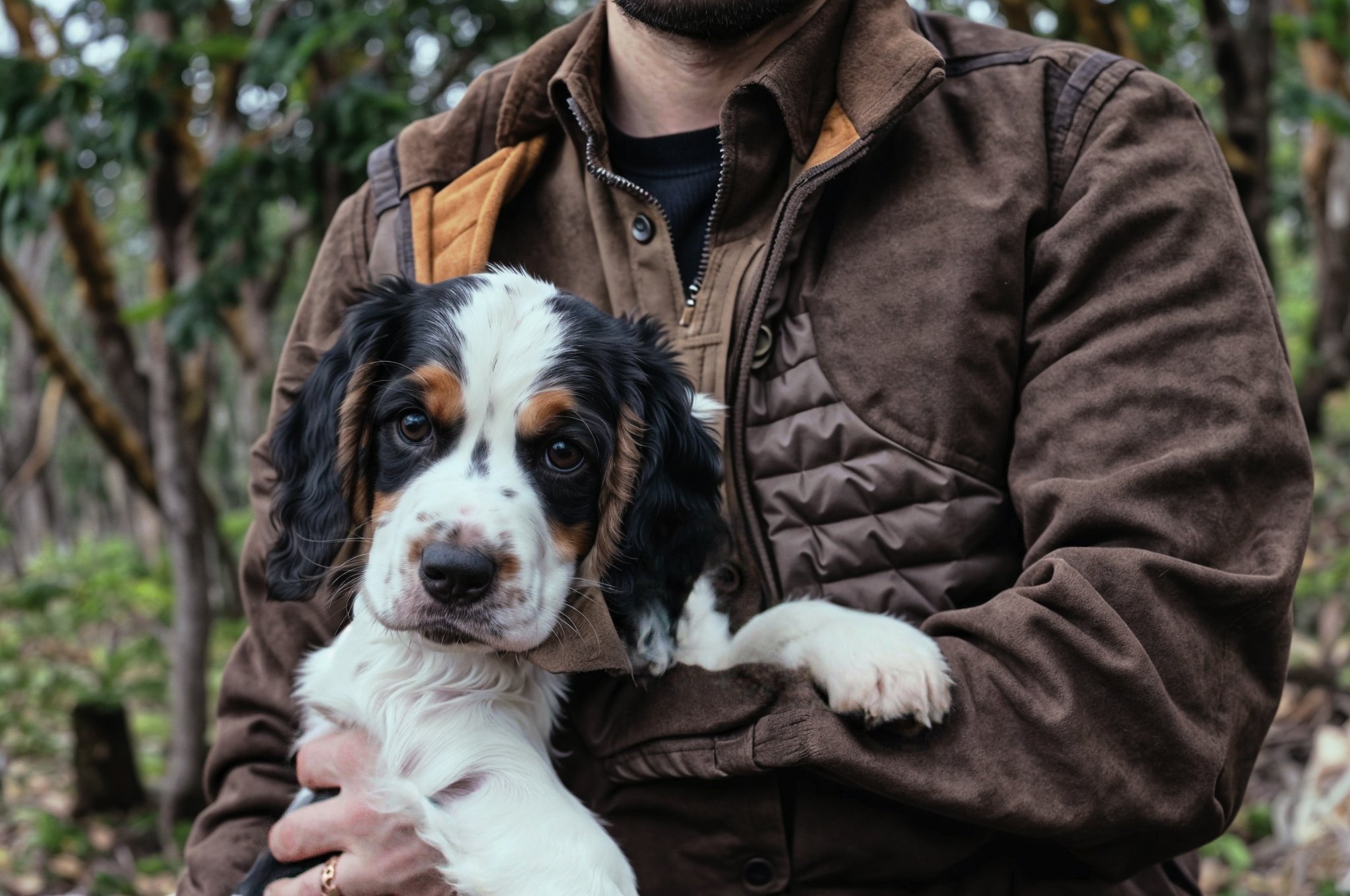About the breed
In 1946 American and English Cocker Spaniels were recognized as separate breeds. Forget what you know about American Cockers – they’re a different beast entirely. English Cockers are 15-17” tall and weigh 26-34 lbs. They’re on the small side for medium dogs, still fitting comfortably at your feet for a car ride. Their heads are broad, muzzle long, eyes large and expressive compared to their American counterparts.
10/10
Here for the play,
down for the snuggle.
5/5 Affectionate
5/5 Good with young children
5/5 Good with other dogs
4/5 Drive
4/5 Energy
3 /5 Grooming required - shedding coat requires basic trimming of fringe, ears, feet, tail
About
-
We’re here to bring you the very best of breed Field-bred English Cocker Spaniels (ECS). ECS are a popular dog breed, especially across the pond and in the South-East USA. ECS are used as sporting/hunting companions and family pets. They are incredibly versatile in their nature. Due to their compact size we say they’re big-dog fun in a small-dog package. They are rare on the West Coast in growing in popularity.
Dog breeding is fraught with issues. It’s expensive to do it right and the margins are narrow. We all have a heart for pet adoption from the shelters. Pet-borne illnesses spread where there are lots of animals cohabitating. Puppy-mills are real and are gross.
-
We’re standing in the gap with a different solution and superior outcomes. We are two families who have scoured the planet for the upper echelon of ECS. We keep our dogs both as working companions and indoor pets. We breed our dogs as enthusiasts, passionate about our hobby. We’re here to share what we love about ECS with you and your family. You’re going to love them!
Our dogs are bred and raised in our homes – exposed to kids, other animals, road and foot traffic. They’re socialized from day one to become your loving and loyal friend and member of the family.
-
Temperament: Enthusiastic, loyal, joyful, affectionate, driven, trusting, upbeat. Due to the strength of the bond they make with their people and their social/affectionate nature, they can suffer from separation related stress if left along for long periods.
History: A member of the AKC sporting group – bred to flush and retrieve wild birds. ECS have been bred over time to demonstrate two phenotypes of the breed highlighting different traits for different uses. Field Bred ECS have shorter hair simplifying grooming and maintenance, more compact bodies, higher set ears. They are often shaven to prevent shedding and grass burr entanglement in their hair. Bench or show bred dogs are bred and groomed to highlight their beautiful coat and long hair.
Grooming: Field bred ECS require infrequent grooming. Gentle detangling of the ears helps prevent matting and is done as frequently as an owner thinks of it. Whole body grooming is seldom required. The hair of the ears, chest and feet are trimmed at minimum 4 times a year. Nail care is required every 1-2 months. `
Temperament: cheerful, affectionate, easy to train, adaptable, eager to please, responsive to praise/reward. Sensitive, long memory (wont forget rough handling). Therapy dogs, detection,
Exercise/Activity: ECS require daily activity or their pent up energy will detract from their potential as happy house-pets. With 1-2 daily romps they will spend the remaining day and night sleeping at or on your feet.
Training/Socialization: Positive reinforcement is key for ECS. They can be sensitive to harsh or unfair treatment and have very long memories. At worst, an ECS will become soft and overly submissive. They are highly intelligent, eager to please and willing. Training is focused on breaking down complex requests into simple steps the dog can master. In this they can be trained to perform a variety of tasks: hunting, retrieving, agility, law enforcement detection, health care companion/detection, show ring, obedience.
Diet/Nutrition: No special considerations
Illnesses: progressive retinal atrophy, patellar luxation, cataracts, hip dysplasia, juvenile-onset renal failure, hypothyroidism and, in particolors, hearing loss.
Upcoming Litters + Puppies









